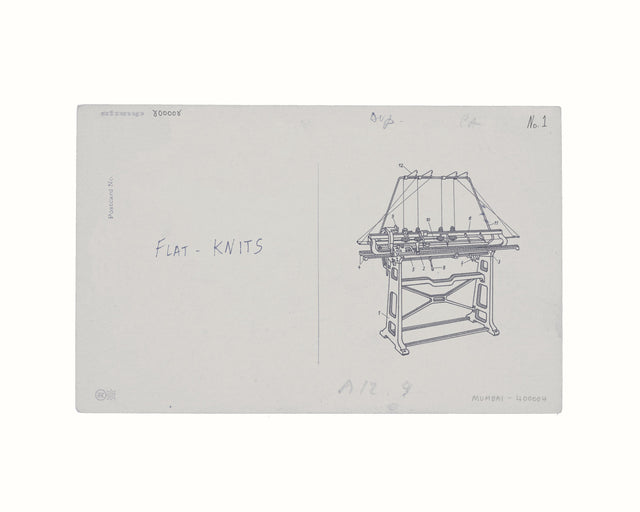FLAT-KNITS
If you pulled on an exposed thread for long enough, an entire piece would unravel into a single yarn.
Rather than cutting patterns into fabric and stitching them together to form garments, flat-knitting is the process of constructing a garment through the warp and weft of the yarn itself. Knitting is ever linked to the homely scene of the grandparent - sticks in hand, yarn in tow - simple scarf or sweater slowly being formed by careful repetition. While a room-sized Seiki knitting machine seems far removed from the grandmotherly rocking chair, it works on exactly the same principle - albeit to mathematical precision. Needles mesmerise as they fly across the length of the flat-bed once a structure is programmed into the machine - knitting minute patterns till a piece is ready (collar, rib and all).
Why should any of this matter to you? Firstly, we prioritise control over our process. We can make decisions down to the fiber we use, the fall of the fabric itself, the texture of the weave, the weight and gauge of the piece - things that contribute to the feeling of wearing Stamp Duty. More importantly, however, is the significant minimisation of waste. By weaving the entire garment from the ground up, there are no irregular shapes left over from cutting a roll of fabric. Fabric wastage is inherent part of the cut and sew process which flatknitting circumvents.
Finally - we just love knits. Shahrukh's ribbed polos and collared sweatshirts in 2000's Mohabbatein. Kal Ho Na Ho's extensive wardrobe full of knitwear for Saif. The cricket vests and polos sported by the likes of Gavaskar and Dev in the 80's. Hand me down alumni jerseys that once graced muddy hill station pitches. The emotions we associate with knits almost seem (like the yarn) inextricably programmed into the warp and weft itself.


0 Comments
There are no comments for this article. Be the first one to leave a message!